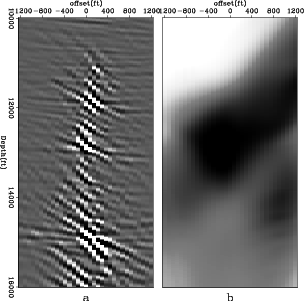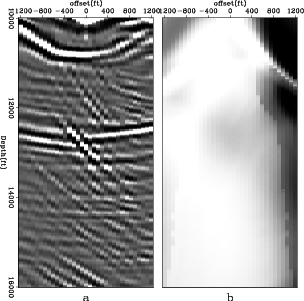|
|
|
|
Angle-domain parameters computed via weighted slant-stack |

|
|---|
|
Sigsbee
Figure 1. Shot profile migration of part of Sigsbee dataset -- zero-subsurface offset. The small box highlights the target area. |
|
|

|
|---|
|
Ojoin16
Figure 2. SODCIG and diagonal of the subsurface-offset Hessian at CMP coordinate 33200 ft. Note the effects of poor illumination represented by horizontal and dipping straight events in the SODCIG. |
|
|

|
|---|
|
Ojoin50
Figure 3. SODCIG and diagonal of the subsurface-offset Hessian at CMP coordinate 33200 ft. Upward curved events correspond to multiples. Note the effects of poor illumination represented by horizontal and dipping straight events in the SODCIG. |
|
|
|
|
|
|
Angle-domain parameters computed via weighted slant-stack |